 Chris Hamilton
.
September 22, 2020
.
Department
Chris Hamilton
.
September 22, 2020
.
Department
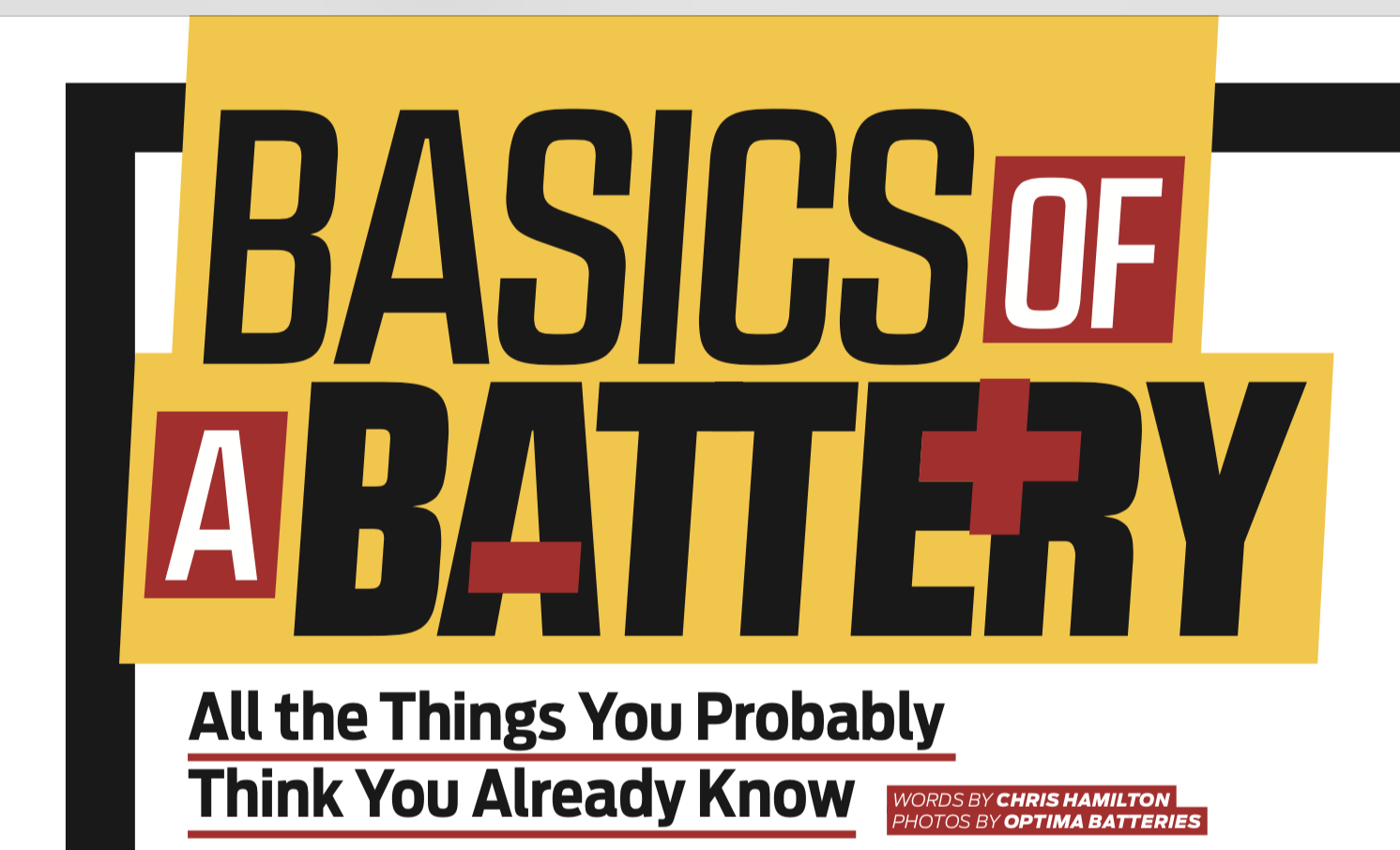
We get the same questions all the time when it comes to battery technology and buying choices. “What’s a gel battery?” “How are they better than stock?” “Do I really need one?” A valve-regulated lead acid (VRLA) battery is a type of lead acid battery characterized by a limited amount of electrolyte absorbed in a plate separator or formed into a gel.
There are two primary types of VRLA batteries: absorbent glass mat (AGM) and gel cell. Gel cells add silica dust to the electrolyte, forming a thick putty-like gel. AGM batteries feature fiberglass mesh between the battery plates, which serves to contain the electrolyte and separate the plates. Both types of VRLA batteries offer advantages and disadvantages.
Due to its construction, the gel cell can be mounted in any orientation and does not require constant maintenance. The term “maintenance free” is a misnomer as VRLA batteries still require cleaning and regular functional testing. They are widely used in large portable electrical devices, off-grid power systems and similar roles, where large amounts of storage are needed.
The main difference between gel style and AGM batteries is the charge rates. AGM batteries can handle higher charge and discharge rates than gel batteries. Nearly every lead-acid battery in a vehicle today is either a flooded lead-acid battery or an AGM battery. Gel batteries are primarily found in stand-alone power applications and not automotive applications.
Here are three things to consider when buying a battery for your truck:
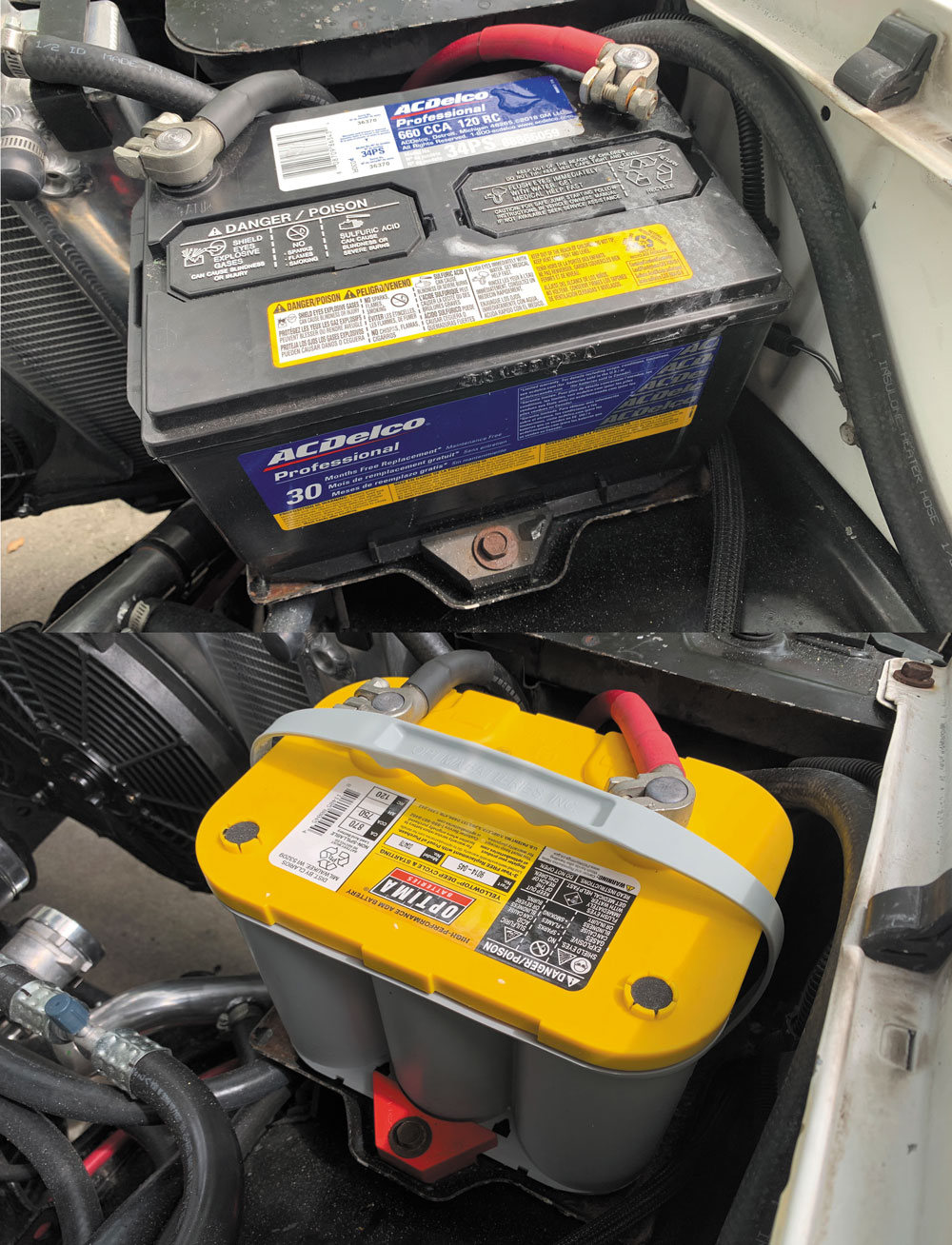
Most batteries will be going right into the same tray in the same location as the battery that came from the factory, so getting a battery that fits in that spot is important. That includes getting a battery that has provisions for external venting, if the battery is located inside an enclosed area, like the cab of a truck or the trunk of a car. Physically modifying a battery to fit in a location it wasn’t designed for is never a good idea.
You don’t need to overdo it on buying a battery based on cold cranking amps, especially if you live somewhere that rarely sees sub-zero temperatures. But know that a battery that doesn’t at least meet the OE requirements for your vehicle could leave you stranded.
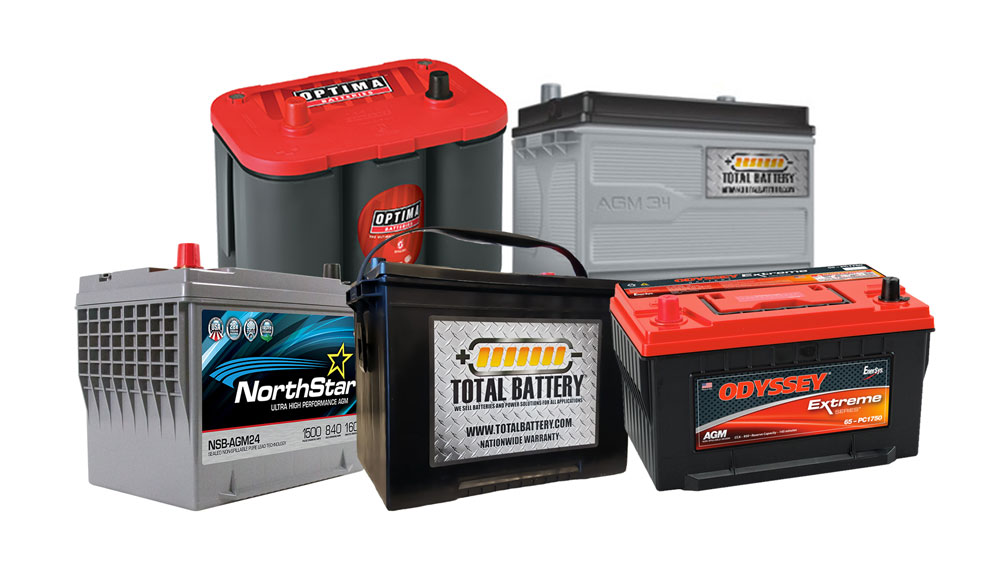
If your truck has a winch, car alarm or other significant electrical accessories that may end up deeply discharging the battery, make sure you buy a battery designed for that type of application. However, just because you have a battery that can be deep cycled doesn’t mean you should let your alternator do all the heavy lifting when it comes to recharging a deeply discharged battery. Most alternators are designed to maintain batteries near a full state of charge, so if you know you’ll be deeply discharging your battery and you’d rather not accelerate the demise of your alternator, buy a quality battery charger.
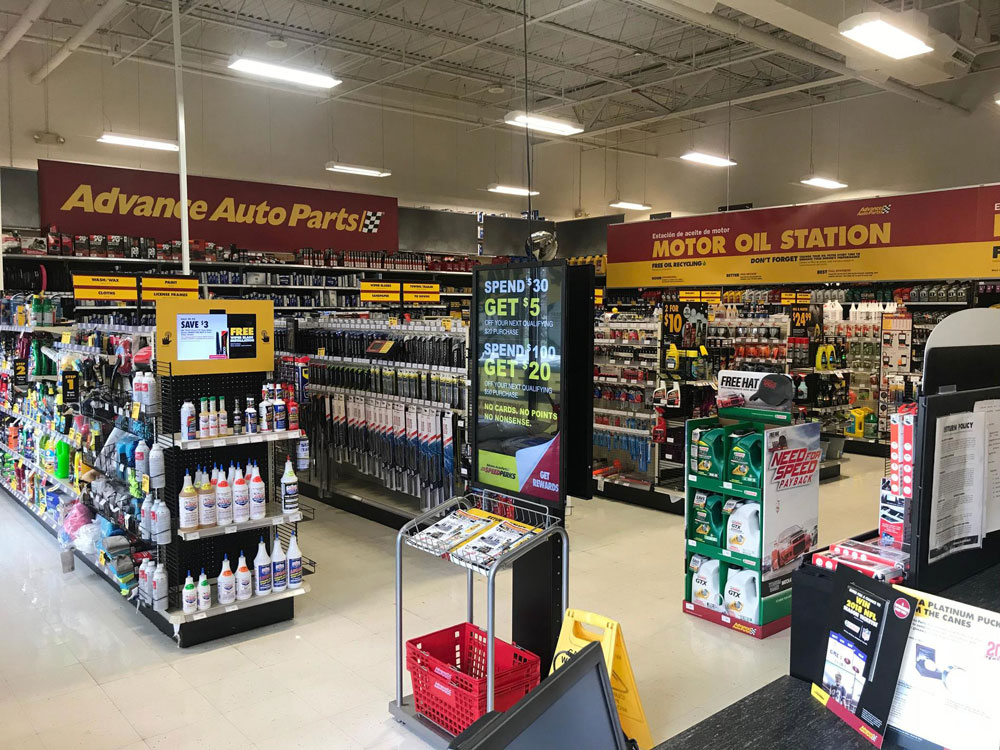
In racing, there’s an old saying that if you have a $100 head, buy a $100 helmet. In other words, if you value your personal safety, don’t cut corners. The same is true for batteries. Having a battery fail at an unexpected moment can be far more than inconvenient. It can put you in a very dangerous situation. If you need a battery, buy a new one from a reputable retailer, who can provide you with warranty service, if you ever need it.
If you have a truck equipped with two batteries and one of them goes bad, you need to replace both of them at the same time. That doesn’t mean you can’t continue using the other good battery in some other application, but any vehicles that use two or more batteries in series or parallel applications should always have batteries that are identical in age, size and type.
#1 Your battery is causing your engine to start slowly
Many batteries returned under warranty are just deeply discharged and work fine once they are properly recharged. If you notice your engine is starting slowly, the first thing you should do is check your battery voltage (it should be at least 12.6 volts) and charge your battery, if necessary. If you don’t have a voltmeter or a battery charger, you may want to get them, as they can save you a lot of money in the long run. If your engine is still starting slowly after charging your battery, have it checked (load-tested) at a quality auto parts retailer. Many will offer this service for free and this is the best method of determining if your battery needs to be replaced.
#2 Dim lights and/or electrical issues mean you need a better battery
Once your engine is started, electrical demand is generally handled by the vehicle’s charging system (alternator). If you notice your lights are dimmer or other electrical issues as you drive, check the output of your alternator at your battery terminals with a voltmeter. It should be in the range of about 13.7-14.7 volts, but if it’s much lower than that, then there’s a good chance you have an electrical issue not related to your battery. It could be an alternator that needs to be replaced, but it could also be a loose or worn-out belt that is making it hard for the alternator to provide adequate power. If your battery voltage is also down, try charging your battery with a battery charger. If it charges up fine and holds voltage overnight (or for 12-24 hours) but starts dropping voltage again as you drive your vehicle, you definitely have an electrical issue, but it’s probably not the battery.
#3 A dying battery will turn the check engine light on
Depending on the vehicle, an illuminated check engine light could literally be anything under the hood. The last thing you want to do is start throwing parts at your car to try and make a warning light go out. If you’re concerned that it might be the battery, check the voltage level (at least 12.6V), charge it with a battery charger if needed and then have it load-tested for at a quality auto parts retailer. Those are all free options that should be explored before you spend any money. Once those are exhausted, have someone read the code that triggered the check engine light, to find out exactly what your car is trying to communicate is wrong with it.
#4 A bad smell is a sign of a bad battery
Bad smells can be a lot of things, like a failing catalytic converter or roadkill stuck somewhere in your car. However, if you notice a rotten egg or sulfur smell coming from the battery, your battery could be venting flammable and toxic fumes (and also possibly acid). In many cases, this odor occurs because a battery is being severely overcharged. Once again, check your battery voltage (at least 12.6V) and alternator output (~13.7-14.7V). If you notice the alternator is charging your battery at a much higher rate than 14.7 volts, then have your charging system checked as soon as possible.
#5 Corroded terminals or connectors means you need a new battery
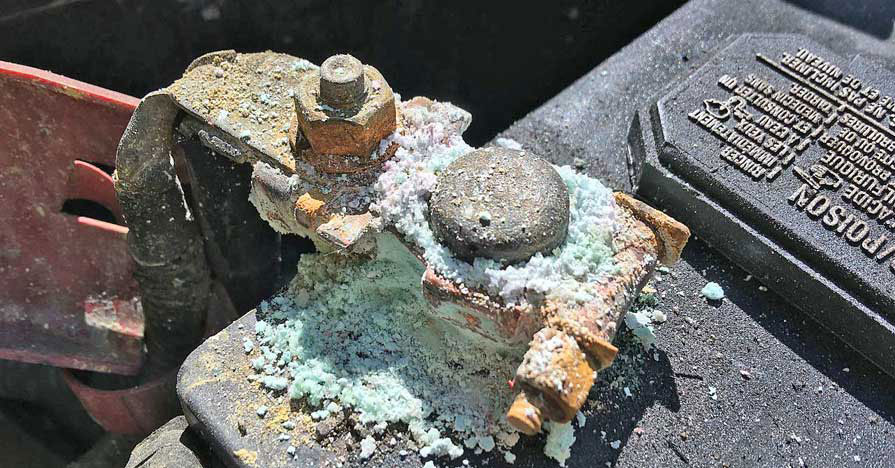
On vehicles with regular flooded lead-acid batteries, if you see corrosion forming around your terminals, it doesn’t mean your battery needs to be replaced, but it does mean there is probably significant resistance building up around that connection, which can make it harder for your battery to accept and deliver current. Clean those connectors and battery terminals with a wire brush and a solution of one tablespoon of baking soda mixed in a cup of hot water. Then check battery voltage (at least 12.6V), charge if needed and have it load-tested for free at any quality auto parts retailer.
#6 Overcharging will cause bulging of the battery case
The two most common reasons traditional “black box” battery cases start to bulge is because of sulfation building up in the plates, forcing them to expand or because a battery is being (or has been) severely overcharged. Neither scenario necessarily means your battery needs to be replaced right away, but you should do some checking. Verify the battery is fully charged (at least 12.6V) and the charging system is functioning properly (~13.7-14.7V), and then have the battery load tested. If it holds voltage and passes a load test, take a closer look at your electrical system to see what might be causing your battery case to bulge.
#7 An old battery should always be replaced
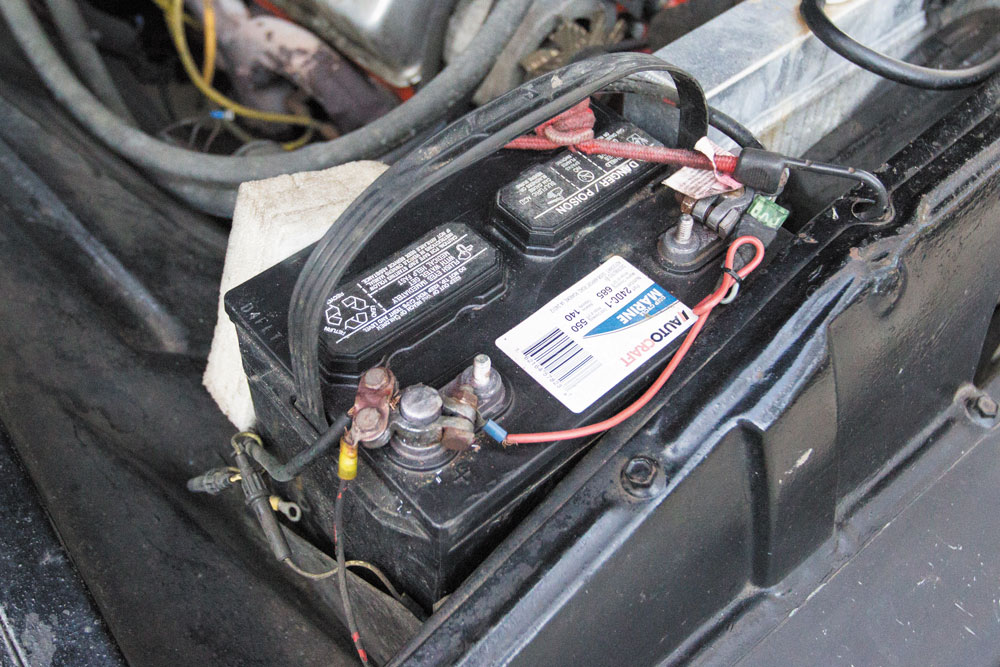
If you’ve had your battery for what seems like a long time for you and you are concerned that it might be on its way out, fully charge it and have it load tested before you decide if it needs to be replaced.
+ Charge no more than 10 amps at a time. This will ensure a full and complete charge without loss of long-term reliability.
+ Do not use your alternator to charge a fully dead battery. You should jump your truck to get when you need to go, and then hook up a charger to completely charge the battery correctly.
+ Don’t pick a battery just to match the color scheme of your truck. Different builds have different demands. Big audio trucks, for example, need reserve capacity to keep up with the demand, not cold cranking amps.
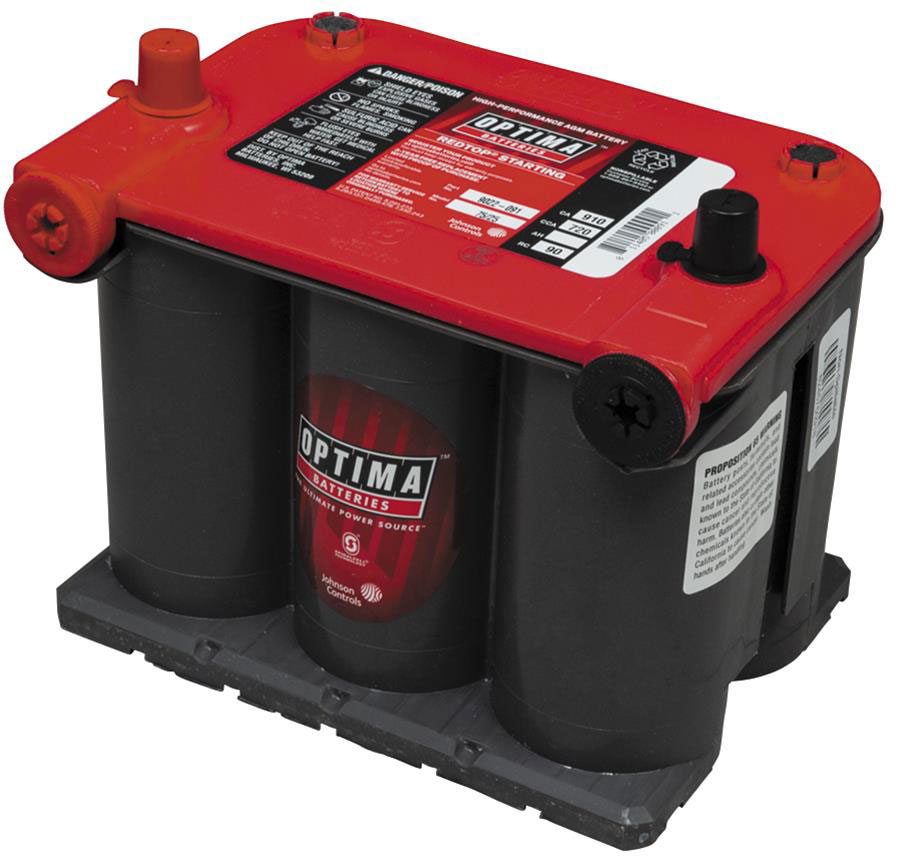
+ Have GM side-mounted terminals? Go for the group 78 battery. These not only have side terminals, but they also have top terminals for additional mounting options.
+ Battery mounting tip: The two black circles on the battery are pressure relief valves. Try to orient them toward the top side of the final mounting location.
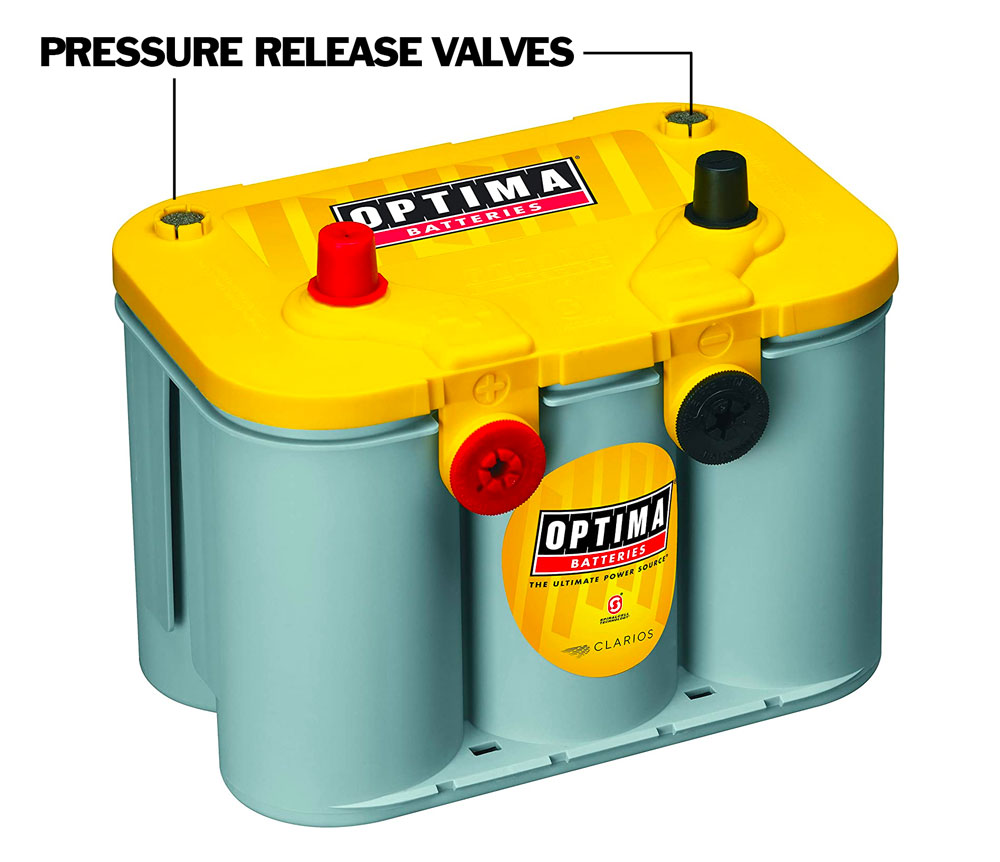
+ Do you have a system with more than one battery? Keep in mind that they all need to be identical so that you have an accurate load. Mismatches can ruin brand new batteries over time.
+ Older batteries have more resistance. A rule of thumb is to consider older batteries to be smaller batteries.
+ If you have multiple batteries, be sure you charge them all separately. You can overcharge some and not charge others enough if you charge them all together.
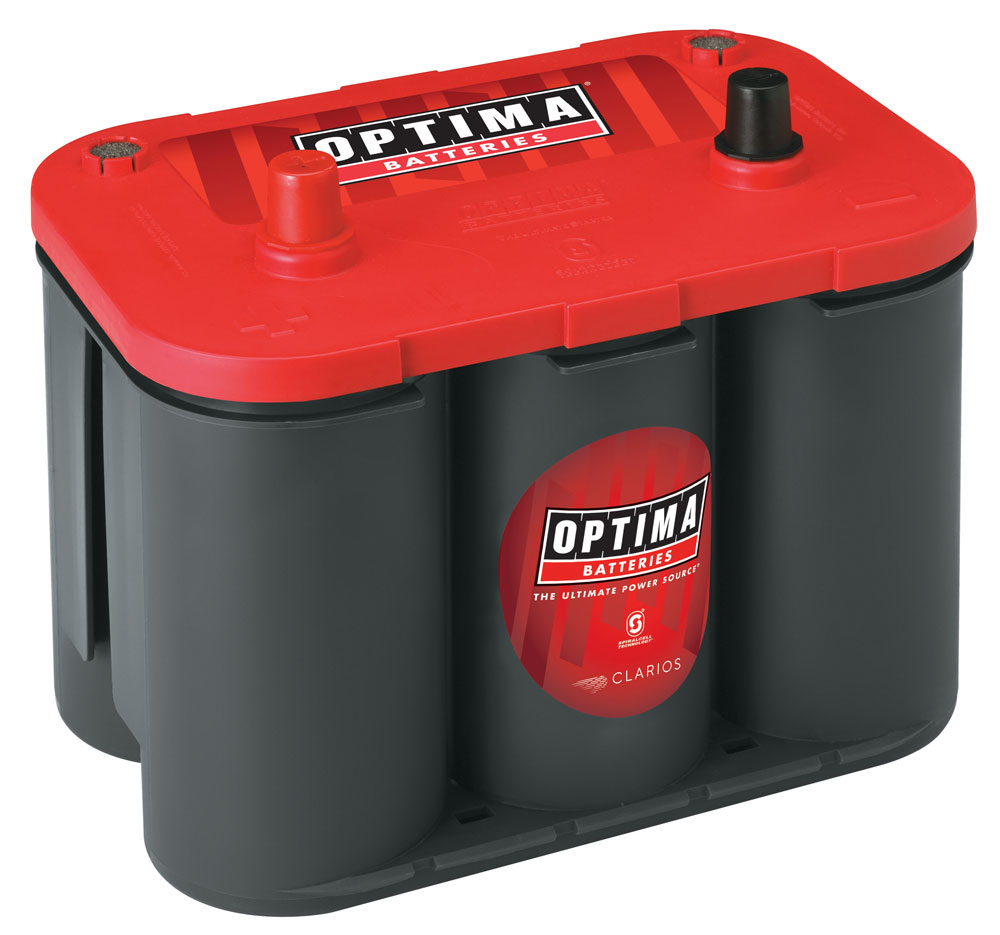
The Redtop high-performance AGM battery is designed to deliver a strong burst of ignition power for a reliable start up every time. It has high-power delivery and extreme resistance to the most common causes of battery failure.
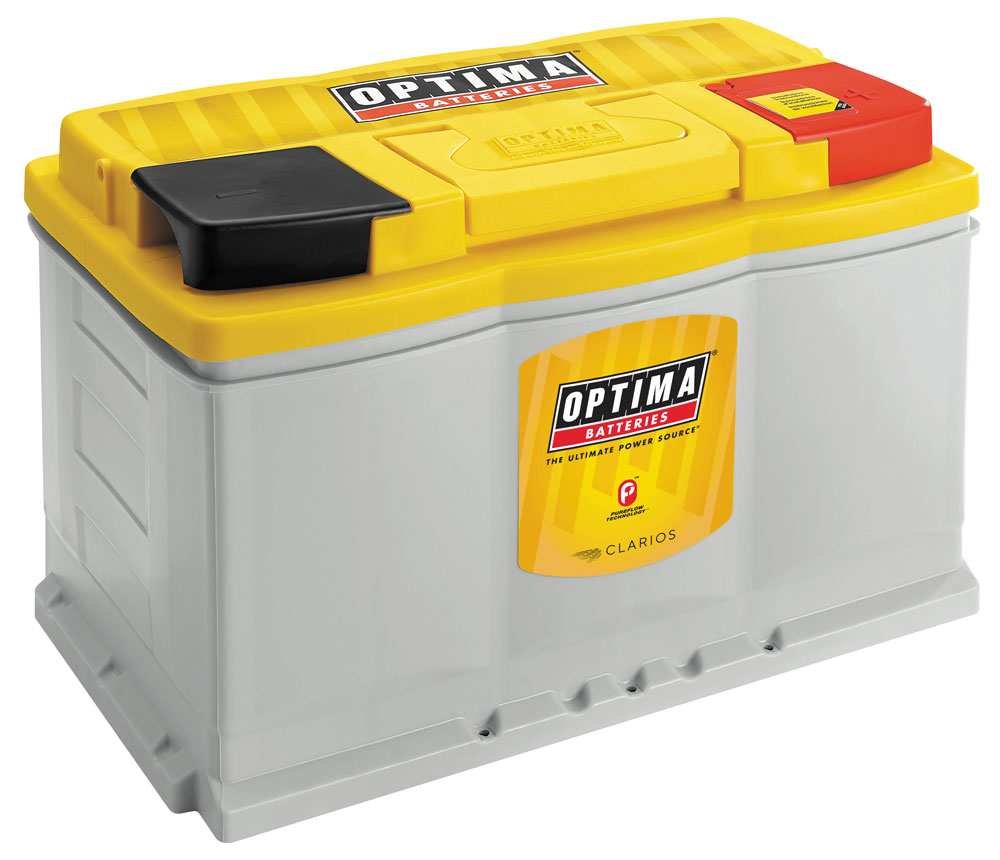
The Yellowtop high-performance AGM battery is a dual-purpose automotive battery. With premium cranking power and impressive cycling capability, this heavy-duty battery is also designed for modern accessory-loaded vehicles. Low internal resistance provides more consistent power output and faster recharges.
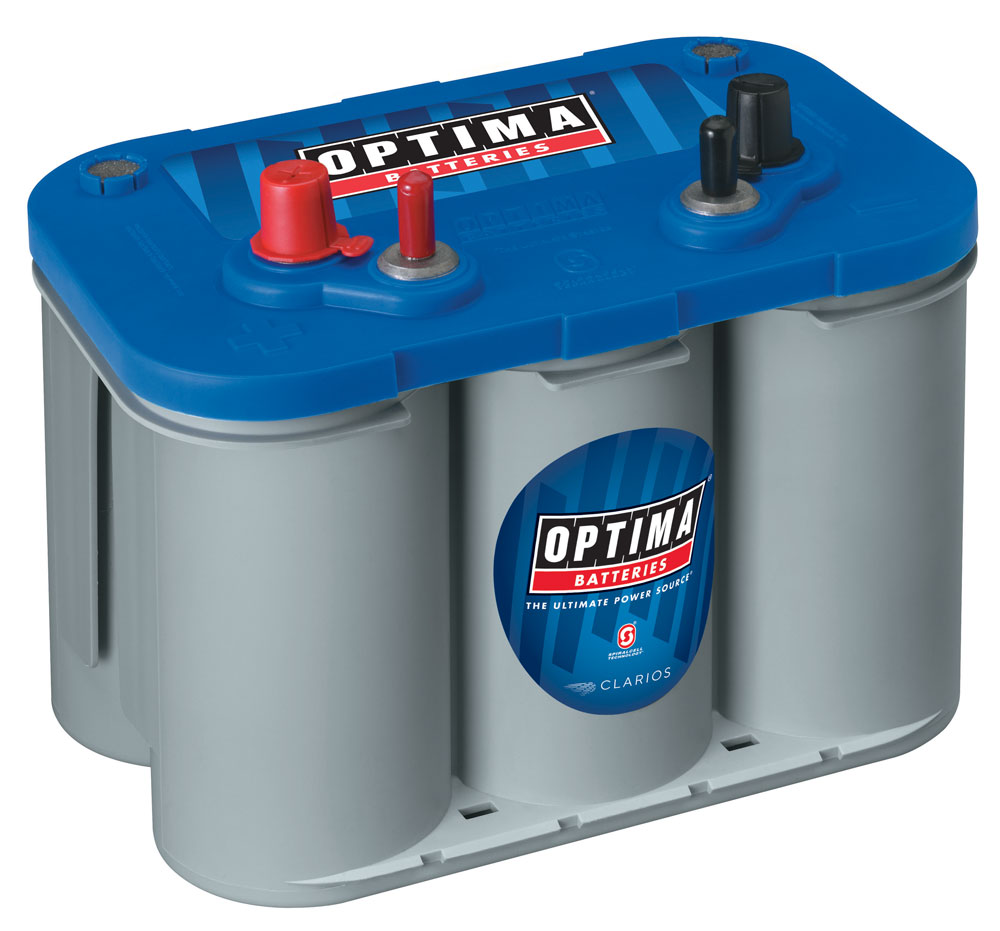
The Bluetop is a high-performance AGM battery with exceptional running time and recharges. On top of providing vibration resistance, the Bluetop’s efficient power delivery and faster recharge time mean you’ll spend less time worrying about your battery. This flexible boat battery and RV battery is designed for those who need a sure-starting, strong-cranking, maintenance-free power source.
The Optima Digital 400 and Digital 1200 12V Performance Battery Charger and Maintainers enhance the performance of Optima and other high-performance AGM batteries in addition to flooded batteries. They also recover deeply discharged batteries and extend the life of all lead-acid batteries.
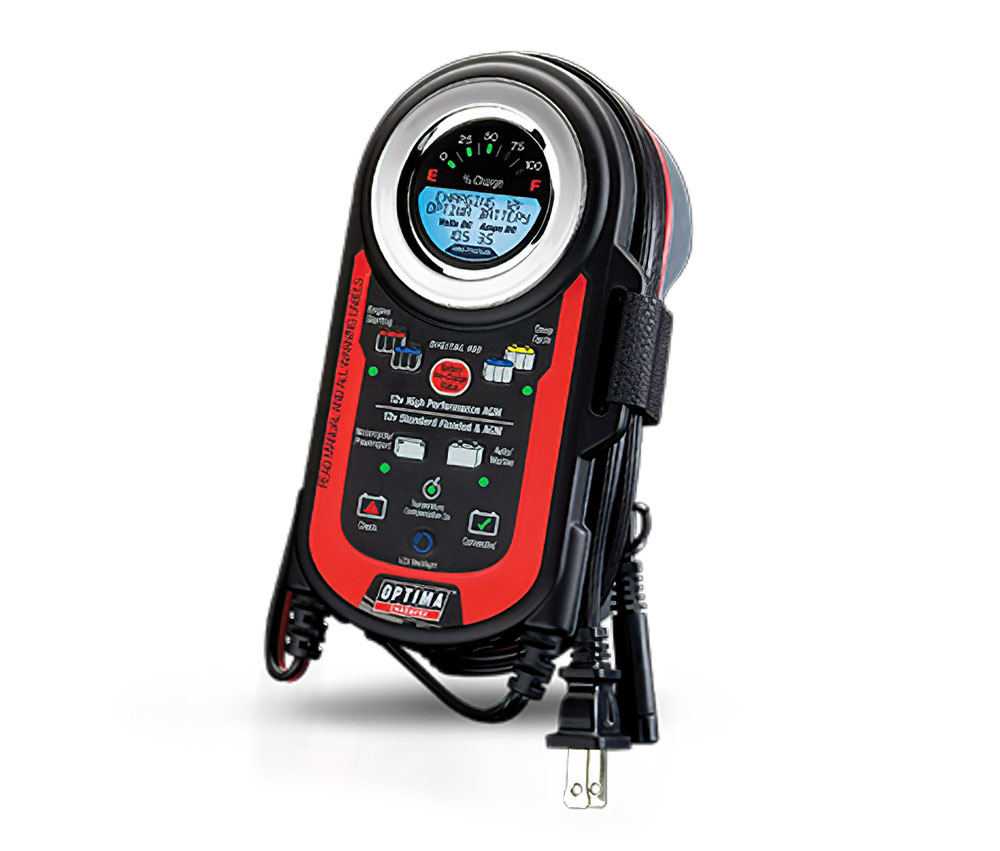
Looking for a car, marine, motorcycle or other AGM battery charger? The Optima Chargers Digital 400 12V Performance Maintainer and Battery Charger automatically maximizes battery life and performance with a built-in battery health mode. It also offers a hybrid LED battery-charging gauge with LCD screen and a quick-set battery type selection for easy operation. And because it recovers discharged batteries that others cannot, this is a maintainer to have in your garage.
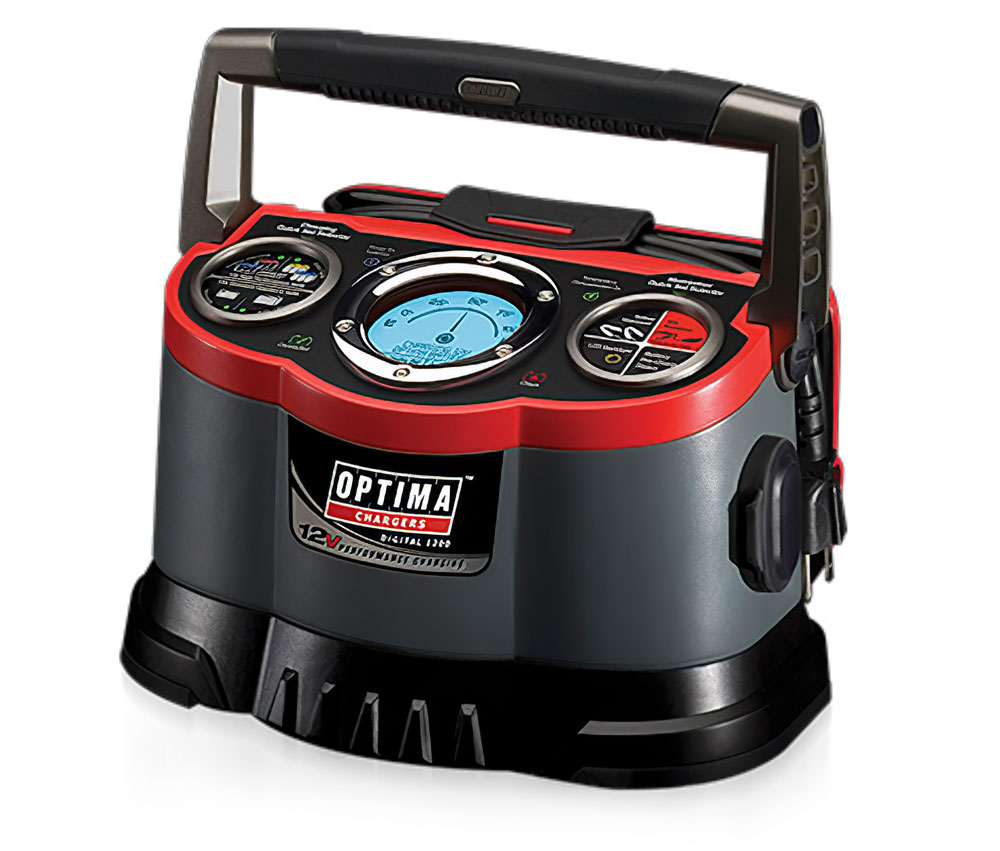
The Optima Chargers Digital 1200 Battery Charger enhances the performance of 12V AGM and flooded Optima batteries as well as other high-performance AGM batteries. It also recovers deeply discharged batteries and helps extend battery life. With an easy-to-read, bright, backlit LCD gauge that displays battery-charging, fill rate, mode settings and fault messages, this charger offers one of the best user interfaces.
Share Link